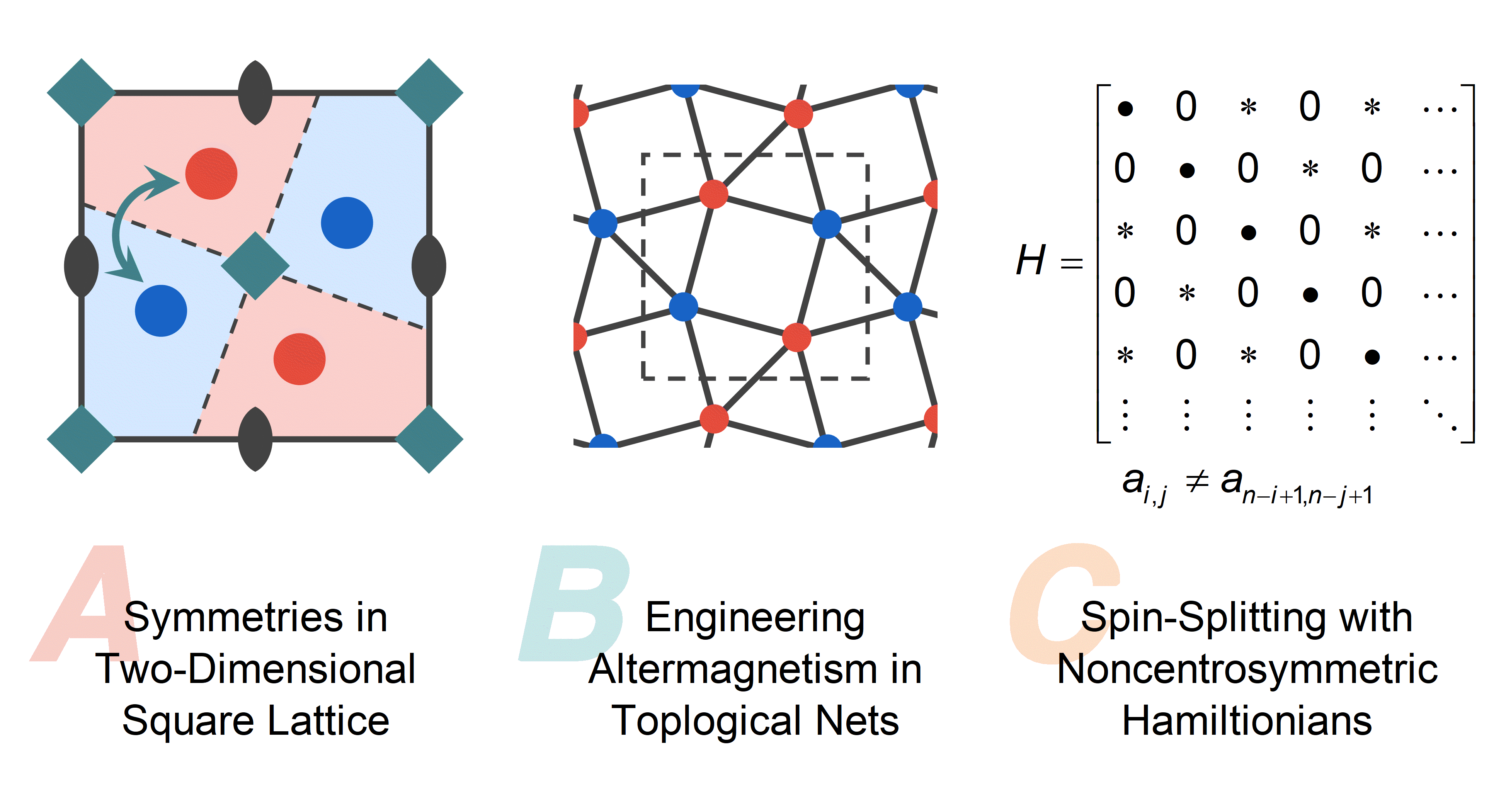RESEARCH



Altermagnetism, an emergent collinear magnetic phase with zero net magnetization and momentum-dependent spin splitting, promises to revolutionize spintronics by leveraging symmetry-driven effects without requiring spin-orbit coupling. Despite its potential, a comprehensive understanding of design principles and spin-splitting mechanisms remains elusive. Here, from a mathematical perspective, we exploit the intrinsic fourfold symmetry and structural versatility of 2D square tessellations to engineer altermagnetic states. By systematically screening the altermagnetic state in all 34 2D square tessellations in the Reticular Chemistry Structure Resource database, we identify the “Lieb” (a regular lattice with 4.4.4.4 tessellation), “fes” (a semiregular net with 4.8.8 tessellation), and “tts” (a semiregular net with 3.3.4.3.4 tessellation) nets as key candidates. A tight-binding Hamiltonian analysis reveals the physical origin of spin splitting across these different tessellated nets. As proof of concept, we demonstrate the pyracylene-based metal-organic framework monolayer t-Cr2[Pyc-O]8, with the tts net, as a robust altermagnet exhibiting a symmetry-compliant ground state. Our Letter provides a symmetry-driven design framework that bridges the mathematical architecture of tessellations with computational materials discovery, enabling reasonable control of altermagnetism in 2D materials.
Downlowd the full article from American Physical Society.

You are welcome to get communication with me at any time. Feel free to contact me by e-mail. Just click the button below!
Get In Touch